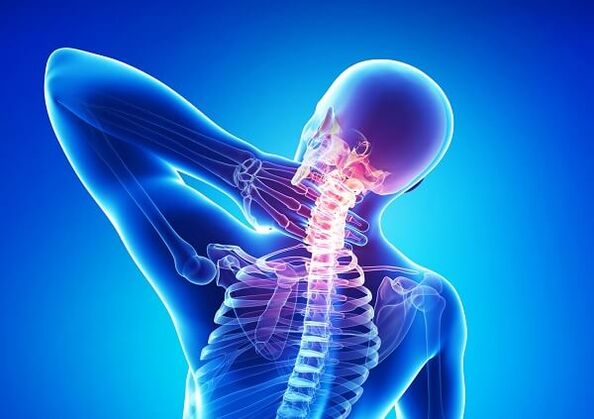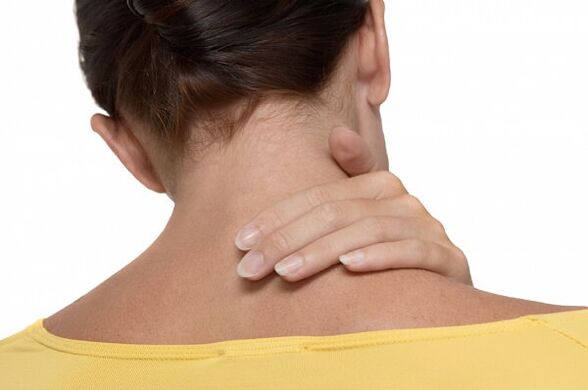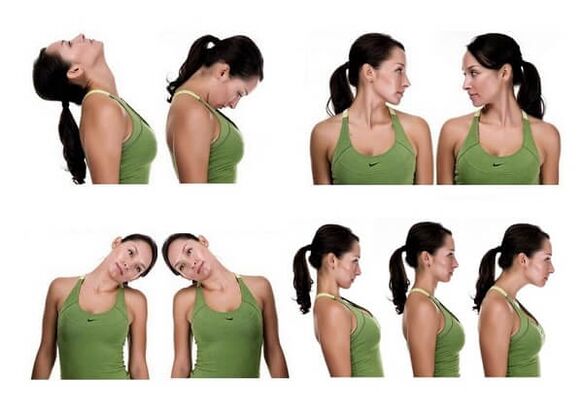
Cervical osteochondrosis can be called one of the most common spinal pathologies nowadays. At the same time, according to statistics, it can be observed that more and more young people are ill with this degenerative disease, previously it was believed that osteochondrosis occurs only in the elderly. It is important to know about the symptoms of cervical osteochondrosis and treatment at home, because the earlier the pathology is detected and therapy is started, the less likely complications arise.
Cervical osteochondrosis is a degenerative disease of the cervical spine, in which the intervertebral disc is destroyed. Pathology develops relatively slowly, but it should be remembered that most degenerative changes are irreversible.
The stage of the disease
The following stages of cervical osteochondrosis are distinguished from early changes, which practically do not cause pain and other symptoms, to destroy the intervertebral disc:
- Preclinical stage. At this stage, no signs of degenerative changes are visible, it occurs at the biochemical level. The patient did not experience pain or other changes in his condition.
- The degree to which degenerative changes in the nucleus pulposus increase. Changes in the nucleus pulposus cause instability of the cervical spine, disturbances in the structure of the fibrous disc occur. The patient begins to experience mild pain and other symptoms.
- The degree of destruction of the annulus fibrosus. There is protrusion of the intervertebral disc - the nucleus pulposus begins to extend beyond the destroyed annular fibrosus, displacement and subluxation of the cervical vertebrae occurs. Pain syndromes and other disease symptoms increased significantly.
- The degree of regrowth of intervertebral disc tissue. The nucleus pulposus begins to be replaced by fibrous tissue, scar tissue of the intervertebral disc, and adjacent structures of the spinal space are involved in the degenerative process. With the development of intervertebral disc fibrosis, pain and instability disappear, but this condition does not mean recovery.
Important!Periodically, exacerbations of the disease can occur with an increase in symptoms, usually after an increase in physical exercise.
The earlier the treatment of the disease begins, the easier it is to achieve a delay of degenerative changes. At the same time, the clinical manifestations of cervical osteochondrosis differ in their diversity, it is often impossible to diagnose the disease without a complete diagnosis, X-ray, MRI or CT.
Symptoms
The main difficulty in identifying cervical osteochondrosis is not sufficiently expressed and not obvious symptoms. In addition to pain syndromes, there are many vegetative symptoms that can speak of diseases of the nervous or circulatory system, therefore, they often identify osteochondrosis through a misdiagnosis.
Autonomic symptoms in men are often considered less severe than pain. Perhaps this is due to the fact that men are less likely to see a doctor with symptoms of neurological diseases. In women, autonomic symptoms related to the emotional space were considered more pronounced.
In general, the following symptoms usually refer to the main symptoms of cervical spine osteochondrosis, and they must all be present at the same time:
- Pain syndrome. The pain occurs in the neck and shoulders, spreading to the shoulder blades. It can also spread to the back of the head. Also, with osteochondrosis, headaches and dizziness may occur.
- Vegetative symptoms. Because of the pinching of nerve endings and blood vessels in the cervical spine, it arises in the cervical spine. Headache, dizziness, nausea, palpitations, symptoms similar to a panic attack occur.
- Numbness, limited movement in the upper limbs, in the shoulder blade area. These symptoms also occur because of pinched nerve endings in the cervical spine.
This is the main symptom that occurs in cervical osteochondrosis, often the pain syndrome is so weak that the cause of malaise begins to be sought in the field of neurology.

How to cure cervical osteochondrosis at home
Treatment of cervical osteochondrosis at home is possible in the early stages of the disease. Therapy should be comprehensive, including pain medication, exercise therapy, massage and several other procedures. Each component of therapy is essential to complete recovery.
Medicine
Pain relievers are usually needed, starting with non -steroidal prescription medications. If such medications do not help, they use a blockade - an injection with an anesthetic at the site of the lesion.
Topical corticosteroid ointments can also be used. Be careful with their use, because if used irrationally, they can be harmful. Such funds are strictly prescribed by prescription; its own use is prohibited.
Also, with severe vegetative symptoms, means can be used to increase the blood supply to the brain. They are prescribed on rare occasions. Sometimes, in addition to them, daytime sedatives are used, which help suppress the symptoms of depression that arise as a result of pinching nerve endings.
Sort
With osteochondrosis, massage of the cervical spine is important, it helps restore blood circulation, relieving tension from tense muscles. Several different massage techniques are used, self-massage is allowed at home, to do it, you need to tilt the head forward in a sitting position, placing hands on the neck on both sides.
Important!If you do not put pressure on the spine, otherwise the pain syndrome can get worse.
With a caressing motion, you need to move from the base of the head to the shoulders, trying to press, but not causing pain. The procedure should be continued for 10 to 15 minutes.
Gymnastics
Exercise for cervical spine osteochondrosis is very important to maintain muscle tone and mobility of the cervical spine. With this disease, the neck muscles must be trained.
The simplest exercise - in a sitting position, you need to place your hands under your chin, gently press upwards. At the same time, you have to withstand the pressure of the head. Exercise should be done for fifteen seconds, as time goes on, the duration should be increased.

Diet
With osteochondrosis, it is recommended to start eating more properly, including more fresh vegetables and fruits in the diet. It is also recommended to eat more seafood and fermented dairy products to replenish the amount of nutrients needed for the normal functioning of the musculoskeletal system.
Treatment with folk remedies
Folk remedies are not very effective in treating cervical osteochondrosis, but there are some recipes that will help the disease. First of all, a variety of compresses are recommended, one of the most effective being potato -based. Raw potatoes should be grated, add a teaspoon of honey, put on the sore spot, cover with adhesive.
Potatoes can be replaced with unleavened unleavened dough. If there is no inflammation, the compress can be covered with a warm cloth for greater effect. You can also lubricate the cervical area with honey while massaging and arrange rubbing it, honey gives the best effect.
With a combination of folk remedies and other treatment methods, you can get the best results.

















































